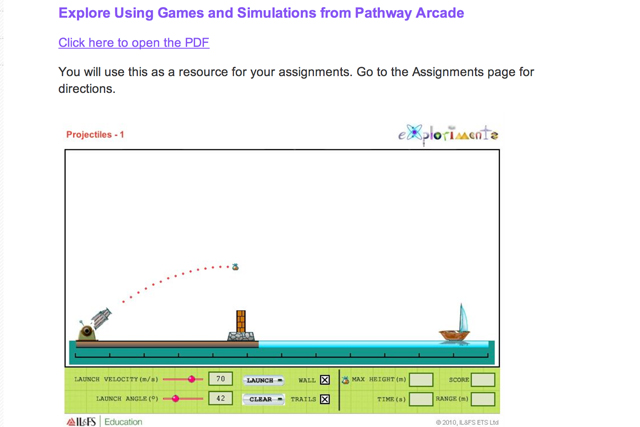One of the major challenges facing game developers hoping to get their tools used by teachers is the level to which teachers are comfortable using those technologies. In this story from the Hechinger Report, journalist Alexandria Neason reports from this week’s edtech conference in Atlanta about what some teachers are doing to answer the training gap.
For teachers in rural areas, technology training for classrooms can be elusive. It’s one reason why swarms of teachers, smartphones in hand, crowded around a small table covered in bar coded stickers at the annual International Society for Technology in Education (ISTE) conference, eager to learn.
They listened intently on Sunday as Terra Graves, a district technology specialist from Washoe County, N.V., explained how to scan quick response (QR) codes for a new massive open online course (MOOC) debuting this August, using Google Hangouts and Google Plus.
“Having it online, being able to have them connect with other educators that teach their content really broadened their horizons,” said Graves, one of hundreds of educators who are gathering at ISTE in Atlanta to swap tips and solutions on digital learning.

Terra Graves, a tech specialist from Washoe County, N.V., modeled the new technology training MOOC available to teachers nationwide after the Pathway to Nevada’s Future project, a statewide online training course she piloted from 2009-2011. The online course, shown above, trained 97 teachers from districts all over the state in technology integration in the classroom.
As school districts across the U.S. increasingly adopt programs that put laptops and tablets in the hands of every student, teachers have expressed the need for proper training. And schools for their part are becoming more vigilant about making sure the digital transition is smooth and cost effective.
Courses like the MOOC Graves designed with tech facilitator Sara Stewart aim to train rural, underserved districts, where teachers may have less access to technology tools.
“The technology can create a personalized environment for them.” – Terra Graves, technology specialist, Washoe County, N.V.
That may explain why Graves’ demonstration was immediately popular with dozens of teachers at the four-day ISTE conference, who came to learn about the array of tech tools and gadgets on display from companies like Microsoft and Google.
Teachers in rural Washoe County have to travel hundreds of miles to more populated districts like Las Vegas for in-person training in personalized and blended classroom models that have the potential to dramatically change the way they teach and the way children learn.
The free course Graves designed is open to any educator, anywhere, and could last as long as 12 weeks. It will cover everything from basic iPad and iPod operation to using games, blogs, and simulations in classroom curriculum.
Graves adapted the course and its curriculum from Pathway to Nevada’s Future project, a statewide initiative she piloted from 2009-2011, with the help of a $4 million Enhancing Education Through Technology (EETT) stimulus grant.
The online course, given in four modules over two years, supplied laptops and iPod Touch devices to 120 teachers who first participated, from districts all over the state; 97 teachers completed all four modules.
Thirteen teachers from Washoe County completed the program, and many are using what they learned to coach others in their schools. Graves said the program’s success prompted her to convert it into a MOOC and offer it to teachers everywhere.
“It’s about changing pretty much everything they do,’’ Graves said. “The technology can create a personalized environment for them.”
In Carson City, N.V., three teachers have completed Graves’ online training so far, and she says they may see a jump in demand for professional development over the next year as the district arms every student there with a digital device.
School districts are aware of the need for training, particularly because technology without training can be a disaster.
The most high-profile example of such a shortcoming came last year after the Los Angeles County Unified School District’s 1-to-1 program was hit with a slew of roadblocks and harsh criticism.
But LAUSD officials are already moving forward, and have learned from prior mistakes. In an ISTE session, they announced that principals must take a course in how to align Common Core and ISTE’s technology standards before receiving new devices next year.
And Graves hopes her MOOC will get teachers to think radically about technology as the center of learning – not just a secondary tool.
“The teacher is not the source of all information,” said Graves. “It’s not for the faint of heart.”
Editor’s Note: This piece originally ran at The Hechinger Report, an independent news operation covering education and is funded by the Teachers College at Columbia University.
